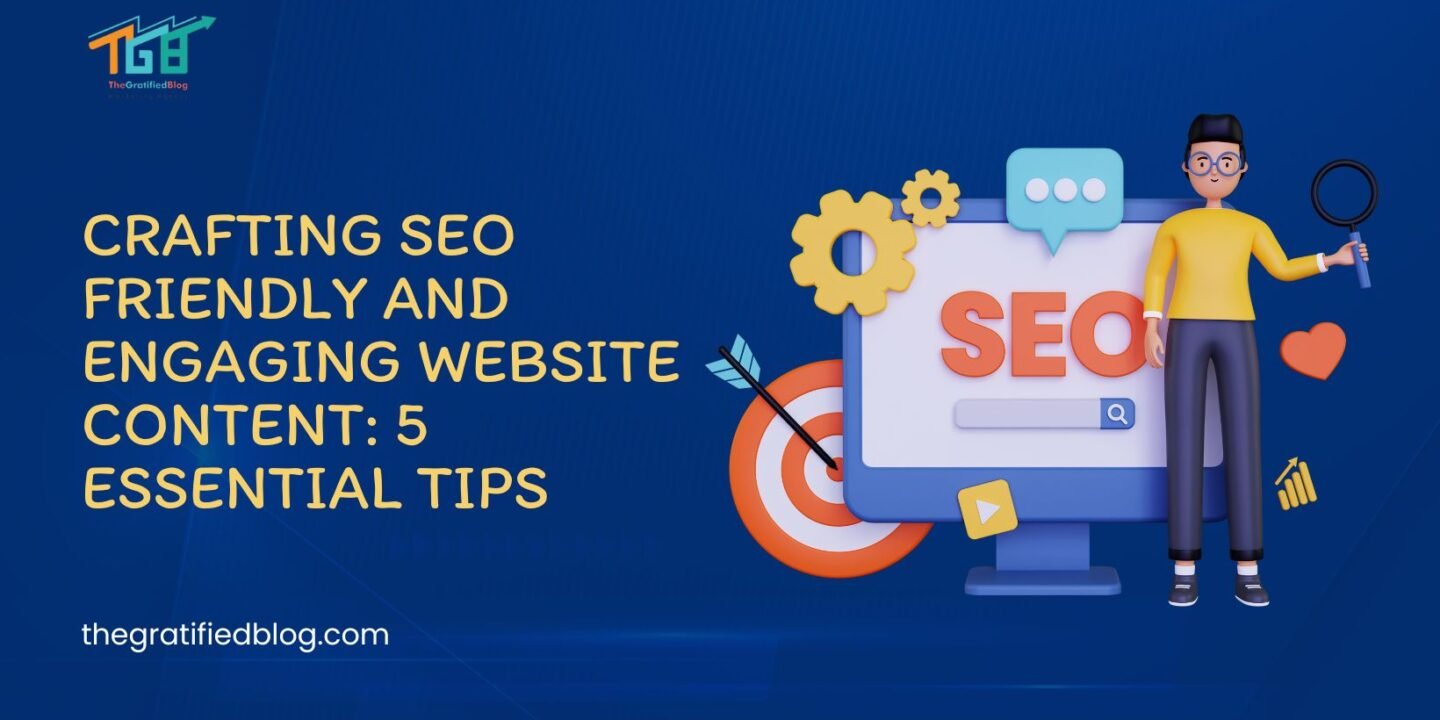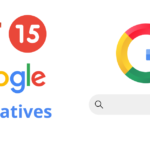
Creating website content that is loved by both humans and robots is not easy. But when done right, it can be remarkably rewarding.
Creating SEO content is more of a must-have rather than a nice-to-have. You can craft the most impressive read that people would love to dive into, but it would be for nothing if they can’t discover it.
Recent data reveals that 53% of all website traffic comes from organic searches. That alone should be enough to convince you to use SEO when delivering content to your audience.
Here, we’ll explore five effective ways to accomplish that mission and five examples of successful brands doing it.
Provide Value For Your Audience

At the heart of both SEO-friendly and engaging website content is undeniable value.
Search engines, like Google, are on a mission to serve up content that answers users’ questions not just accurately but with depth and relevance. For readers, value comes from content that enlightens, entertains, or solves a problem. They’re always on a quest for content that’s worth their time and clicks.
The golden rule here is if it matters to your audience, it matters to search engines.
So, how do you pack your website with value?
- Get cozy with your audience’s needs and pain points.
- Use tools like Answer the Public or Google’s “People also ask” section to pinpoint precisely what your audience is searching for.
- Craft your content to answer these questions comprehensively, incorporating relevant keywords naturally while keeping the text enjoyable and informative.
Take GetSafe as a stellar example. In the crowded medical alert systems market, they’ve carved out a niche by providing invaluable insights on choosing the right system for one’s needs.
Their “How to Choose a Medical Alert System” post is a masterclass in providing value. It addresses a significant concern for their target audience – safety and independence for themselves or loved ones.
By focusing on a critical topic, GetSafe positions itself as a thought leader and captures the attention of both search engines and readers, ensuring their content is seen, appreciated, and acted upon.
Make UX A Top Priority
User experience (UX) has been a loud buzzword this past decade.
But there’s a reason for it – its role is the backbone of both engaging content and SEO success.
That’s because search engines and readers are looking for the same thing: easy-to-digest content.
Another thing to consider here is that 88% of visitors aren’t likely to return to websites where they had a bad experience. That’s a massive chunk of potential traffic (and business) lost due to poor UX.
Here’s how to ensure your website doesn’t fall into the nasty UX trap:
- Start with a clean, intuitive design. Your site should be easy to navigate, with a clear hierarchy and readable text on all devices.
- Break up text with subheadings, bullet points, and graphics to make content more accessible to scan.
- Remember loading times. A fast site keeps visitors happy and reduces bounce rates, which Google considers a positive signal.
eTraining sets a prime example of UX done right. On their landing page for a rigging training course, they’ve mastered presenting information in an engaging, digestible format.
Short, punchy propositions are paired with relevant visual cues, making it easy for potential customers to understand the benefits of their service at a glance.

This approach aids comprehension and makes users’ decision-making process smoother and faster. Focusing on a seamless UX can quickly boost your SEO rankings and ensure your visitors stay longer, engage more, and convert.
Write With Search Intent In Mind
Understanding and aligning with search intent is like decoding a secret language between your audience and search engines.
The secret lies in figuring out what people are searching for and why they’re searching for it.
This alignment helps ensure that your content attracts clicks, engages, and satisfies the reader’s intent.
Using long-tail keywords dramatically helps in this regard. They comprise over 70% of online searches, which implies that tailoring your content to long-tail keywords can significantly improve your SEO performance and user satisfaction.
Here’s how to capitalize on search intent:
- Start by identifying the primary types of intent: informational, navigational, transactional, and commercial investigation.
- Use tools like Ahrefs’ Keyword Explorer to find long-tail keywords that match these intents.
- Then, craft content that directly addresses them. For instance, provide thorough, well-researched answers if the intent is informational. For transactional queries, highlight the benefits of your product or service.
SocialPilot exemplifies this strategy with finesse. By targeting the long-tail keyword “how to boost my social media marketing game,” they’ve crafted a post that directly answers this query.
This way, they effectively meet the reader’s needs with valuable, actionable content. The result is a spot at the top of Google, capturing their target audience’s attention and trust.

SocialPilot’s success with this approach emphasizes the power of writing with search intent in mind, blending smart SEO with genuine audience care.
Include Visuals That Convey Your Message
Visuals aren’t just a nice finish to a great piece of content. They’re essential for making your content appetizing for search engines and readers.
Studies show that content with relevant images gets 94% more views than content without. This staggering figure highlights the undeniable impact visuals have on engagement and SEO. Search engines favor content that provides a rich user experience, and visuals are a big part of that equation.
Here’s how to integrate visuals effectively:
- Start by ensuring that every image, infographic, or video you add serves a purpose.
- Whether illustrating a point, breaking up text, or providing an example, your visuals should enhance your message, not distract from it.
- Remember to optimize your images for search engines using descriptive filenames and alt tags, ensuring they’re easily found in image search results.
Mannequin Mall, a fashion mannequin retailer, offers a brilliant example of visuals in action. Their ultimate mannequin buyer’s guide is a visually rich resource that guides potential customers through selection.
Incorporating images of different mannequins alongside actionable advice makes the guide educational and engaging.
This approach helps customers visualize how each mannequin could fit into their retail space, enhancing the user experience and making the guide a valuable tool for decision-making.
Using visuals strategically will help relay valuable information to customers, improve your SEO, and draw more eyes to your site.
Create Evergreen Content
Evergreen content is like a gift given to search engines and readers.
This content remains relevant and valuable, continuing to draw in traffic, engage readers, and maintain its rankings.
Unlike trending topics that might spike in popularity only to fizzle out, evergreen content addresses your audience’s ongoing interests and needs, ensuring a steady stream of visitors and engagement.
Here’s how to craft evergreen content:
- Focus on timeless topics within your niche. These can include how-to guides, FAQs, or foundational articles that provide deep insights into your industry. The essence lies in crafting content that retains its utility today and a year into the future.
- Ensure that your content is comprehensive, answering both the immediate and related questions your audience might have.
- Regularly updating your evergreen pieces will also help keep them fresh and relevant, further boosting their longevity.
Our last example is from Indeed – a prominent job search platform. Their “Learn About Being a Project Manager” guide is an example of evergreen content done right.
This guide targets a specific, ongoing interest, offering in-depth advice for those pursuing a career in project management. By covering the essentials of the role, necessary skills, and career prospects, Indeed provides enduring value to aspiring project managers.
Using this approach can position your brand as an authoritative source of industry advice. It can also guarantee that your content continues to attract readers interested in your line of work, making it a perpetual asset in your content strategy.
Final Thoughts: SEO-Friendly and Engaging Website Content
Crafting SEO-friendly and engaging website content is an art form that can significantly elevate your online presence.
By providing value to your audience, prioritizing UX, including meaningful visuals, writing with search intent, and creating evergreen content, you set the stage for a website that attracts, informs, and retains visitors.
These strategies can be your toolkit for building a bridge between your content and audience, ensuring that every piece you publish ranks well and resonates deeply. Tackle them one by one so that you can satisfy both readers and search engines.








No Comments